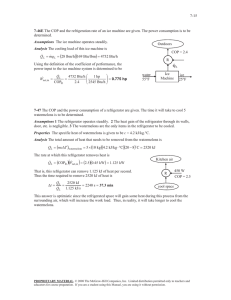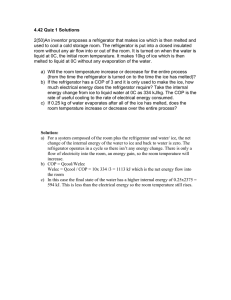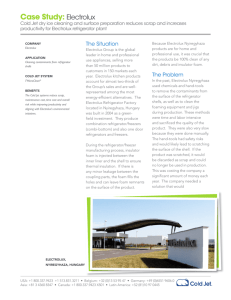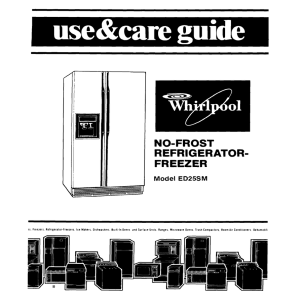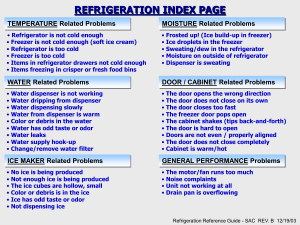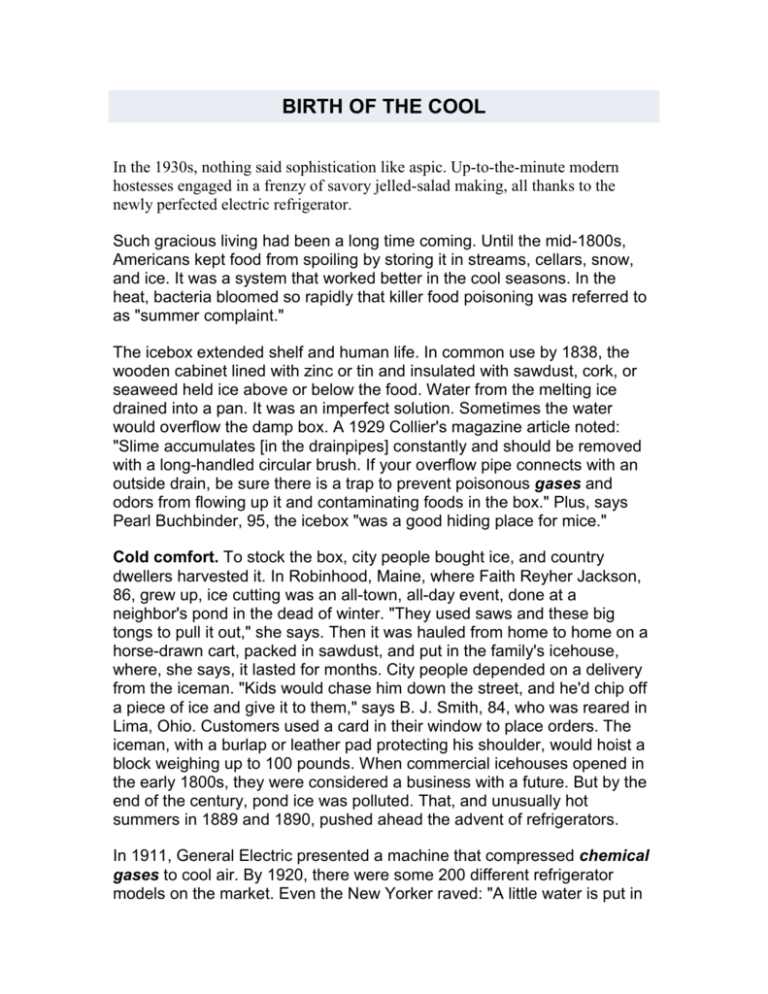
BIRTH OF THE COOL
In the 1930s, nothing said sophistication like aspic. Up-to-the-minute modern
hostesses engaged in a frenzy of savory jelled-salad making, all thanks to the
newly perfected electric refrigerator.
Such gracious living had been a long time coming. Until the mid-1800s,
Americans kept food from spoiling by storing it in streams, cellars, snow,
and ice. It was a system that worked better in the cool seasons. In the
heat, bacteria bloomed so rapidly that killer food poisoning was referred to
as "summer complaint."
The icebox extended shelf and human life. In common use by 1838, the
wooden cabinet lined with zinc or tin and insulated with sawdust, cork, or
seaweed held ice above or below the food. Water from the melting ice
drained into a pan. It was an imperfect solution. Sometimes the water
would overflow the damp box. A 1929 Collier's magazine article noted:
"Slime accumulates [in the drainpipes] constantly and should be removed
with a long-handled circular brush. If your overflow pipe connects with an
outside drain, be sure there is a trap to prevent poisonous gases and
odors from flowing up it and contaminating foods in the box." Plus, says
Pearl Buchbinder, 95, the icebox "was a good hiding place for mice."
Cold comfort. To stock the box, city people bought ice, and country
dwellers harvested it. In Robinhood, Maine, where Faith Reyher Jackson,
86, grew up, ice cutting was an all-town, all-day event, done at a
neighbor's pond in the dead of winter. "They used saws and these big
tongs to pull it out," she says. Then it was hauled from home to home on a
horse-drawn cart, packed in sawdust, and put in the family's icehouse,
where, she says, it lasted for months. City people depended on a delivery
from the iceman. "Kids would chase him down the street, and he'd chip off
a piece of ice and give it to them," says B. J. Smith, 84, who was reared in
Lima, Ohio. Customers used a card in their window to place orders. The
iceman, with a burlap or leather pad protecting his shoulder, would hoist a
block weighing up to 100 pounds. When commercial icehouses opened in
the early 1800s, they were considered a business with a future. But by the
end of the century, pond ice was polluted. That, and unusually hot
summers in 1889 and 1890, pushed ahead the advent of refrigerators.
In 1911, General Electric presented a machine that compressed chemical
gases to cool air. By 1920, there were some 200 different refrigerator
models on the market. Even the New Yorker raved: "A little water is put in
some mysterious place: A few minutes pass, a magic door opens, and a
tray of small ice cubes appears before your startled eyes." But such
marvels were not for everybody or, in fact, almost anybody. Most machines
were powered by motors so large they were housed in separate rooms.
That inconvenience was trumped by cost. One 1922 refrigerator ran $714
(the equivalent of $7,856 today). A competing invention, the Crosley
Icyball, required putting part of the machine over a kerosene burner every
24 to 36 hours. But the industry's biggest problem was the coolants that,
on occasion, leaked and killed people.
It wasn't until 1930, when Frigidaire began cooling with
chlorofluorocarbons, that people began upgrading to refrigerators. Small,
with big fans on top, the appliance changed the way America ate.
Manufacturers provided books with menus for a lifestyle that included ice
tongs, bridge parties, and recipes showing off all that a refrigerator could
do for a single meal. (In 1929, Kelvinator suggested a raspberry cup,
molded lamb, celery curls, and Kelvinator fruitcake with whipped cream.)
Pre-fridge, "frozen desserts and frozen salads were nonexistent or just for
wealthy people," says Sylvia Lovegren, author of Fashionable Food: Seven
Decades of Food Fads. "All of a sudden, the middle class could have
things that seemed high class a few years before." And what could be
more high class than frozen cheese salad or an icy frappe made of
condensed tomato soup?
By 1937, more than 2 million Americans owned refrigerators. By the mid'50s, over 80 percent of the country had made the switch. Today, while the
mechanics have remained much the same, the refrigerator has gotten ever
fancier. Freon, the chlorofluorocarbon that changed the future, has been
replaced with coolants that don't eat through the ozone layer. Hydrators,
automatic defrost systems, and icemakers have lured customers, but it is
hard to imagine any upgrade that could dazzle as much as the early
promise of no ice--and no mice.
PHOTO (COLOR): Before the refrigerator, only the wealthy could enjoy
frozen salads and frozen desserts.
By Katy Kelly
Copyright 1990 the U.S. News & World Report, L.P. All rights reserved.








